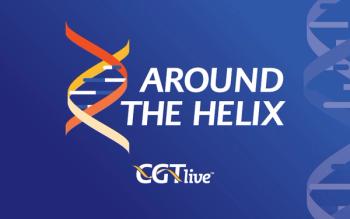
Lucas Harrington, PhD, on Using an Ultracompact CRISPR System to Target Cells Outside the Liver
The cofounder and chief scientific officer of Mammoth Biosciences discussed the company’s mouse model research on treating hypertriglyceridemia.
“[T]here’s a lot on the horizon. As companies like ourselves start to break out of the liver all the work that’s been done over the last 2 to 3 decades understanding the genetics of these diseases... That is actually going to be the floodgates [opening]—being able to leverage that information.”
Over the years, genetic research has revealed a wealth of information about genetic diseases that affect a wide array of organs and tissues throughout the body. Despite the advent of gene therapy and gene editing techniques, however, ability to effectively treat many of these genetic diseases is relatively limited because of the challenges of targeting genomic medicine technologies at specific cell and tissue types of interest. Adeno-associated virus (AAV) vectors, for example, which have been a popular method of delivering such technologies, tend to mainly traffic to the cells of the liver. Another obstacle is that AAV vectors and many other delivery methods are limited in the size of the payload that they can deliver. As such, there has been much interest in developing new technologies to broaden the tissue specificity of genomic medicines and make them more compact. Mammoth Biosciences is one company currently working on such an approach with its Ultracompact CRISPR system. Lucas Harrington, PhD, the cofounder and chief scientific officer of Mammoth Biosciences, presented preclinical data on the use of this system to treat hypertriglyceridemia in mice at
At the conference, CGTLive® interviewed Harrington to learn more about the company’s novel gene editing platform and the mouse model data he presented. Harrington explained how the platform works and went over a few key points from the preclinical research, noting that the Ultracompact CRISPR system was able to effect a 95% reduction in triglyceride levels in mice. He also briefly discussed Mammoth’s new collaboration with Regeneron.
REFERENCE
1. Harrington L, Chen J. Reduction in triglycerides through a novel Ultracompact CRISPR system: Efficacy in mouse models and NHP studies. Presented at: ASGCT Annual Meeting 2024, May 7-10; Baltimore, Maryland. Abstract #15
Newsletter
Stay at the forefront of cutting-edge science with CGT—your direct line to expert insights, breakthrough data, and real-time coverage of the latest advancements in cell and gene therapy.












































